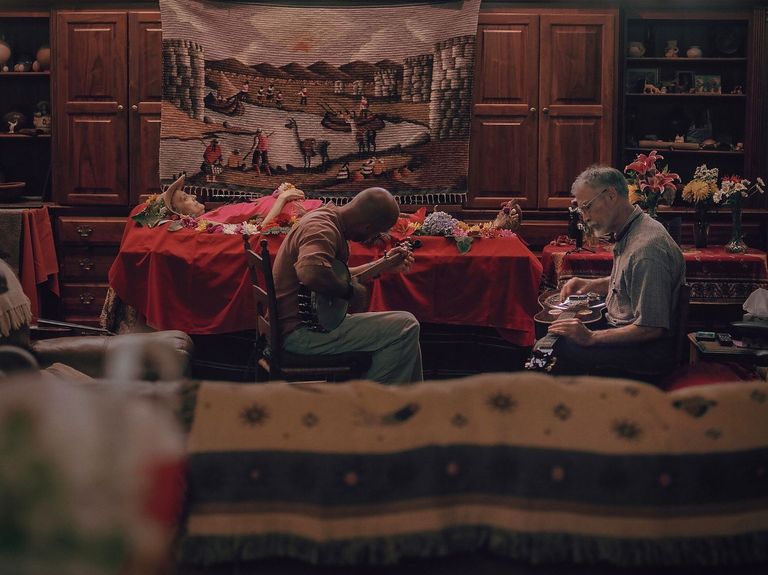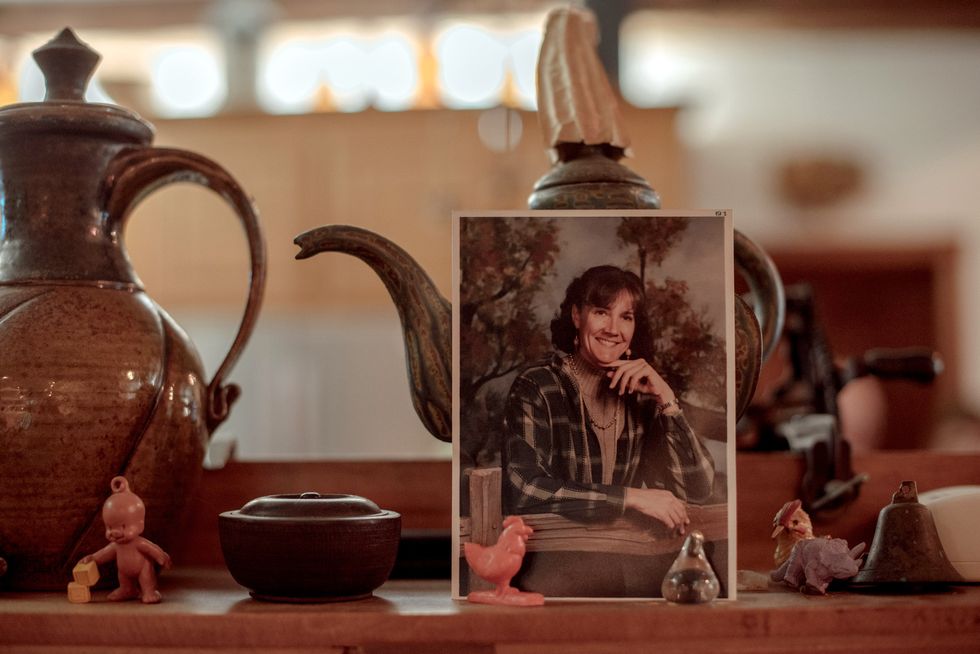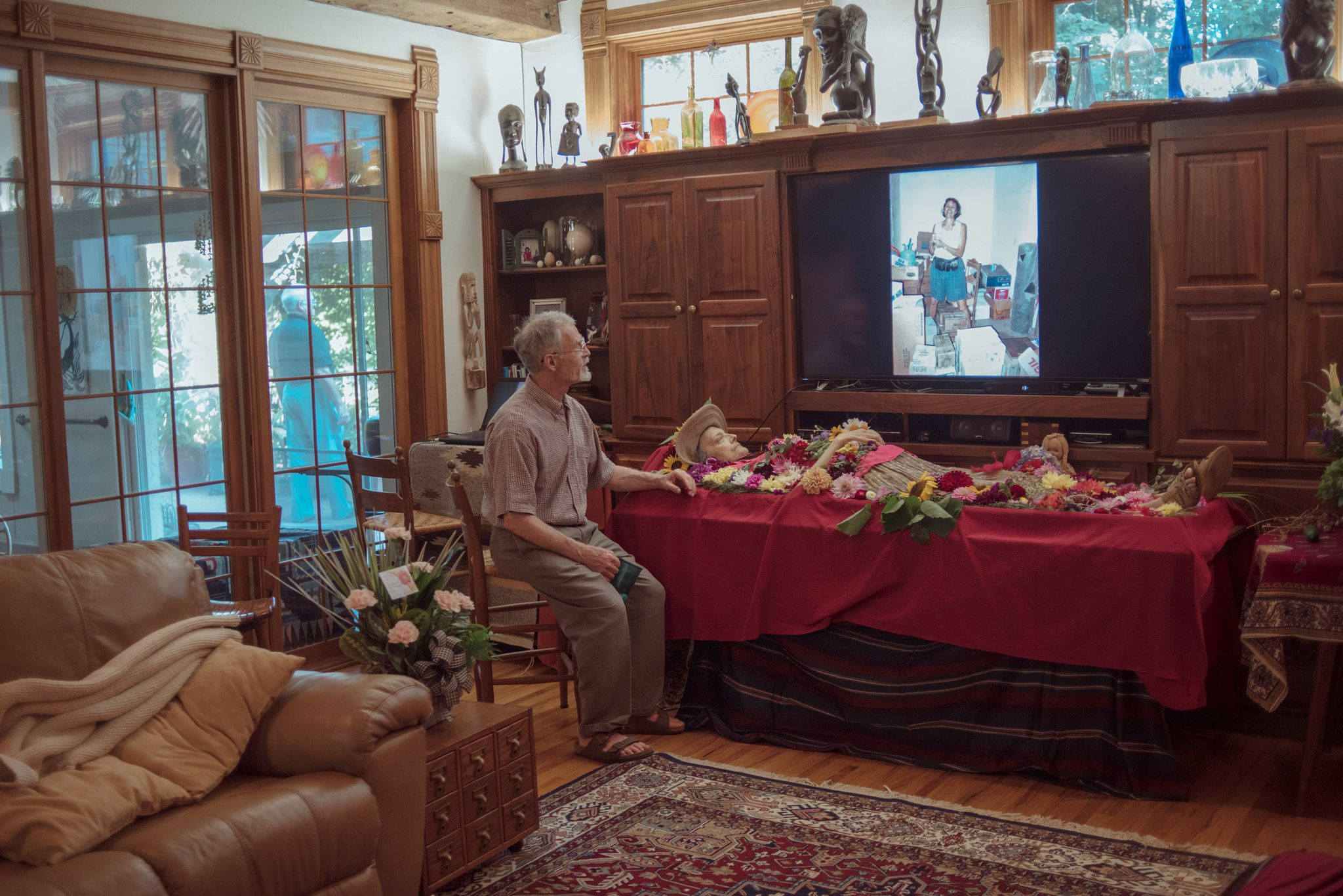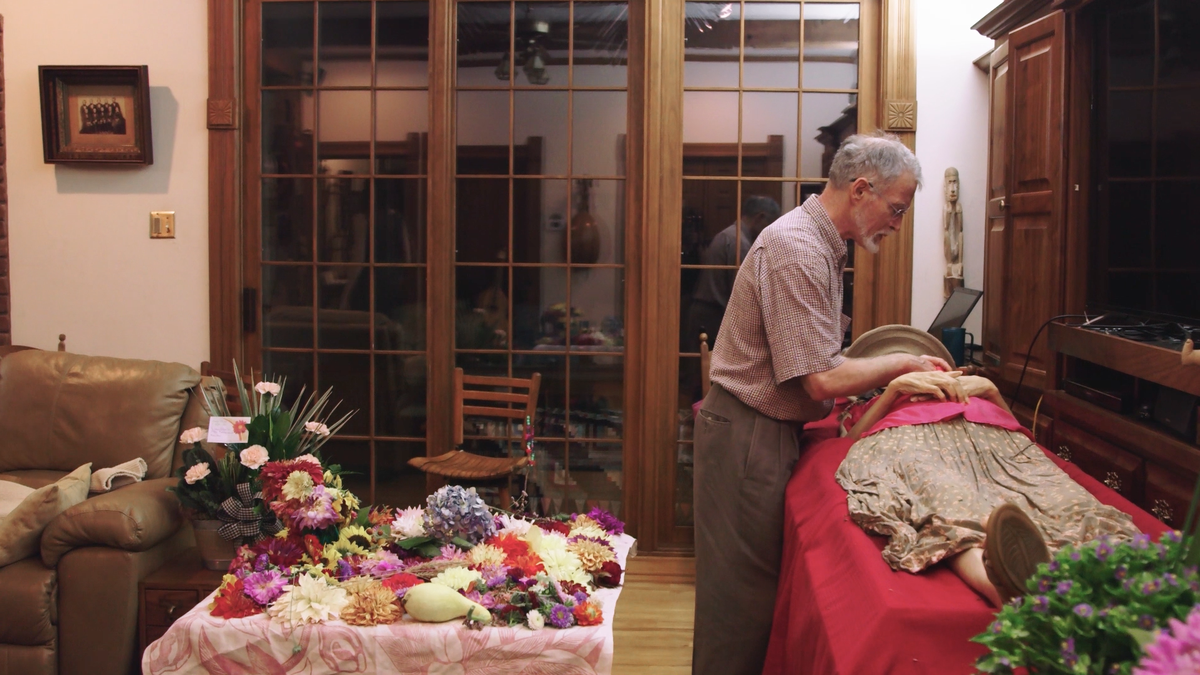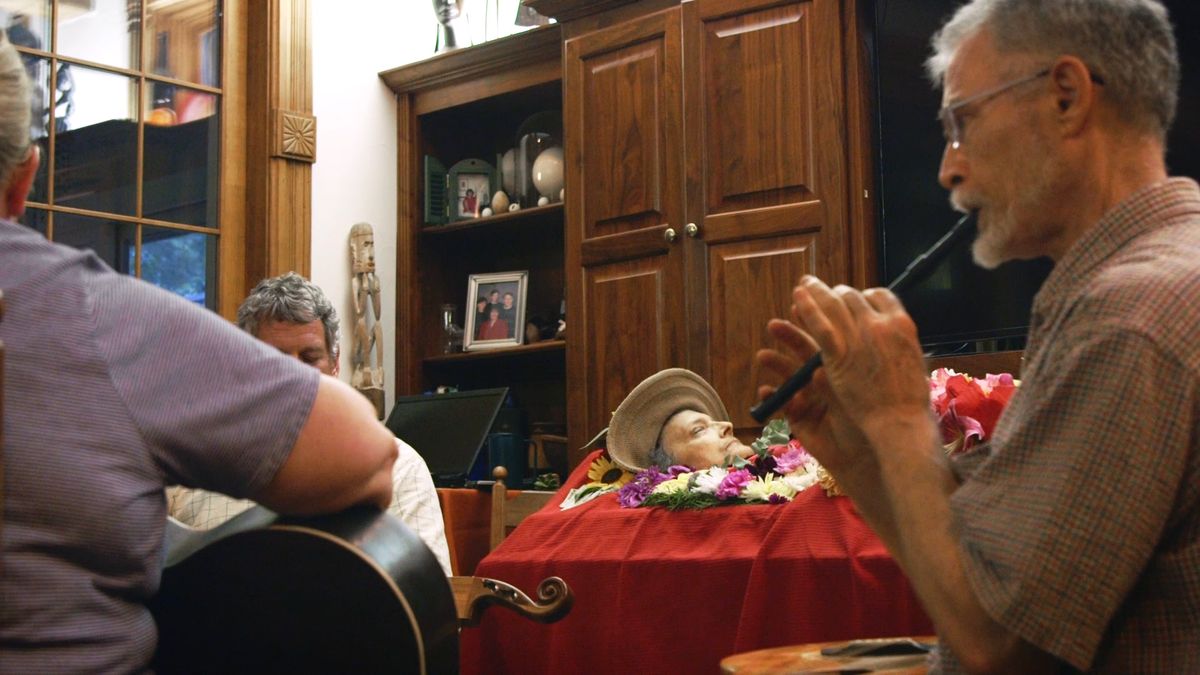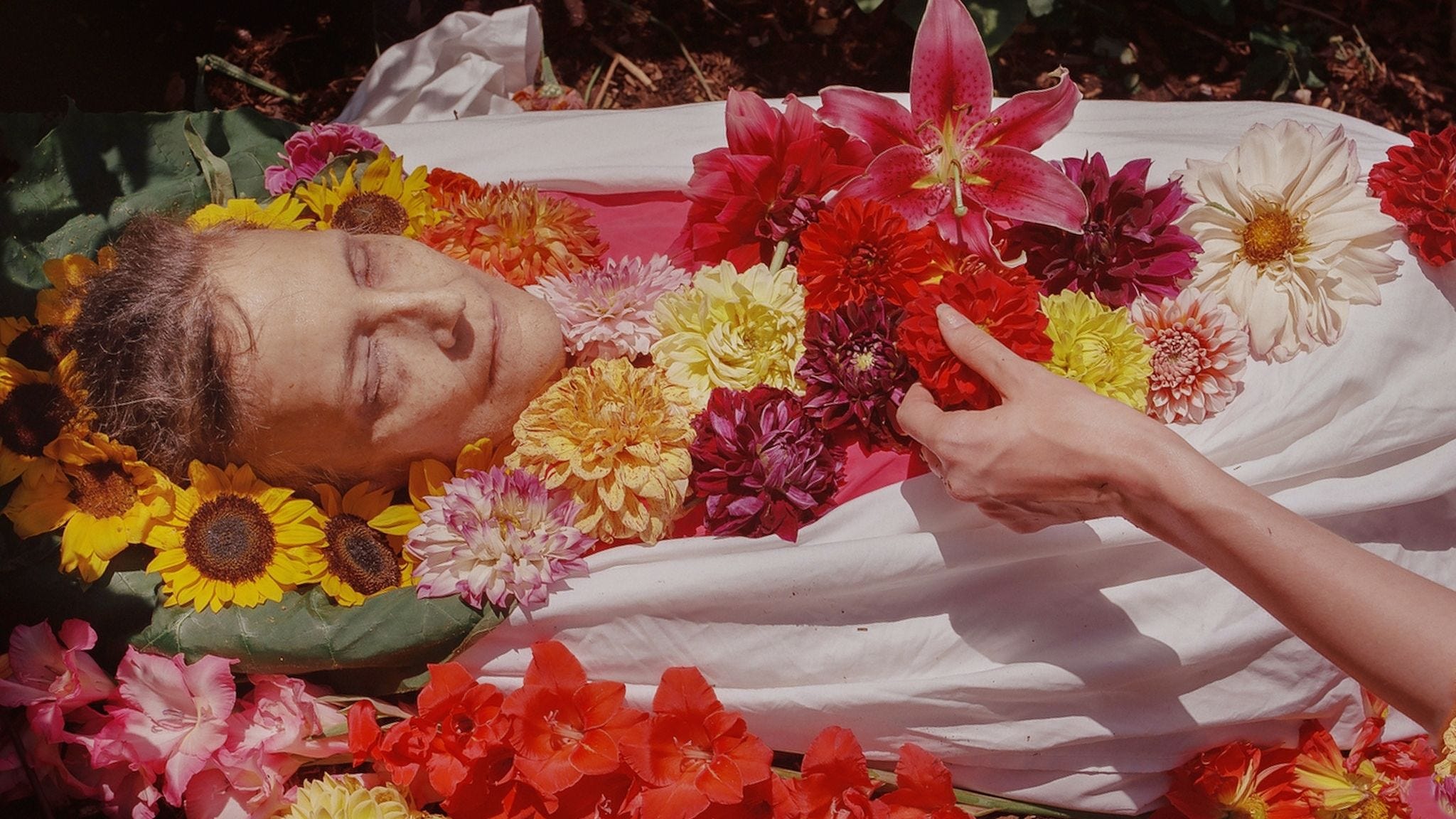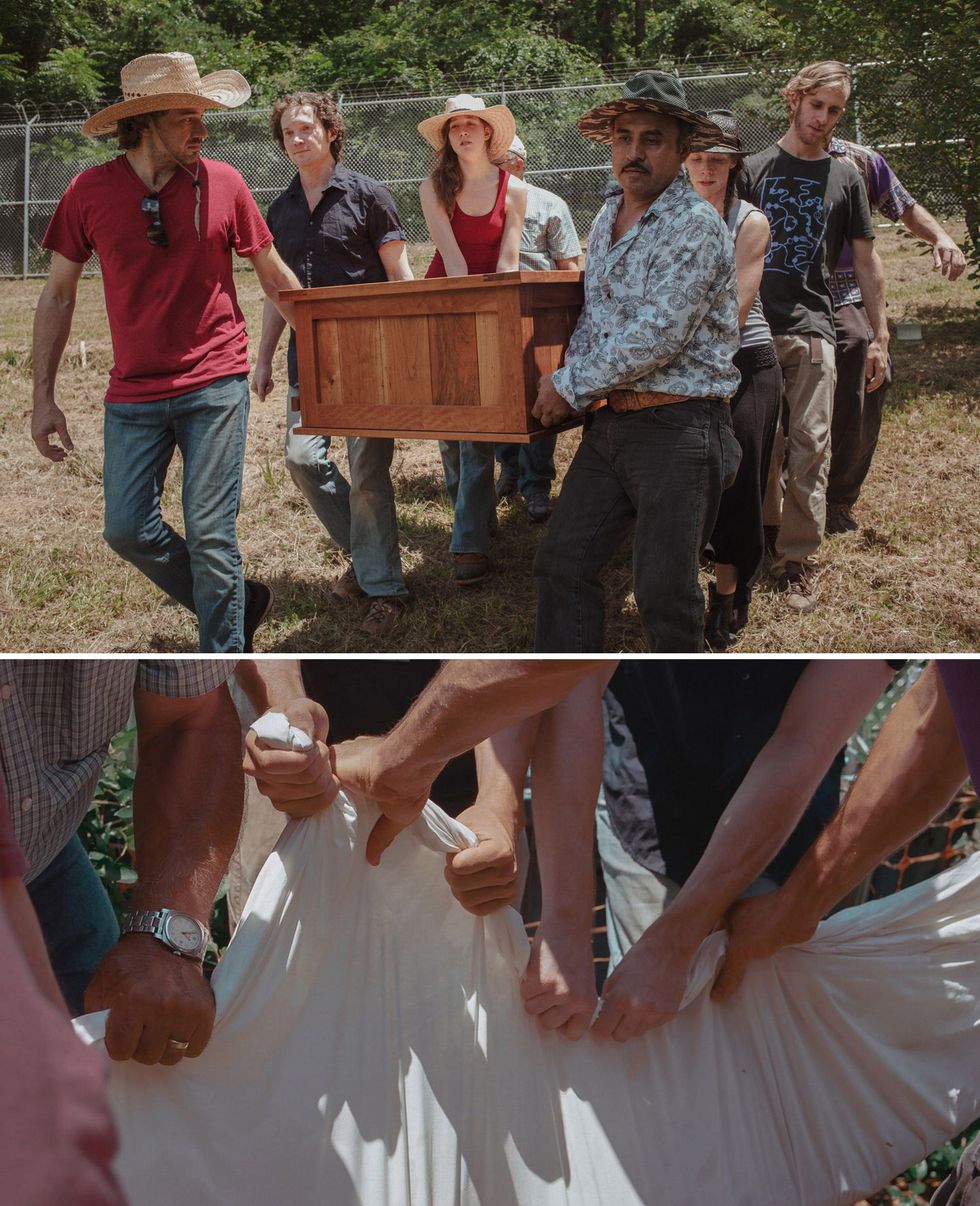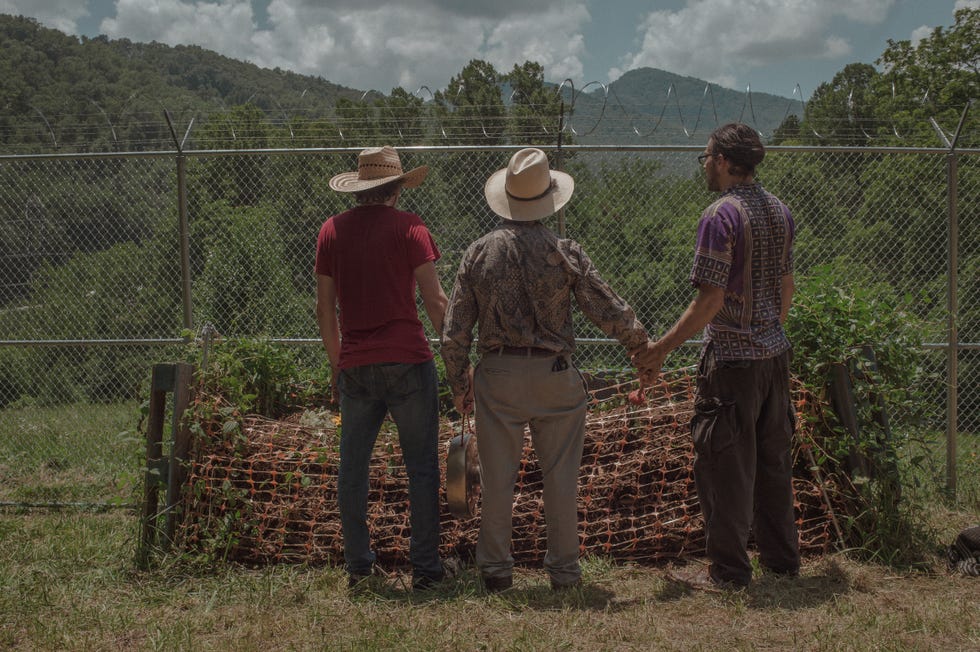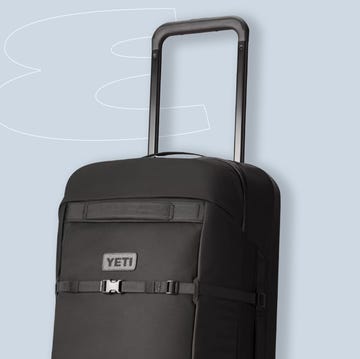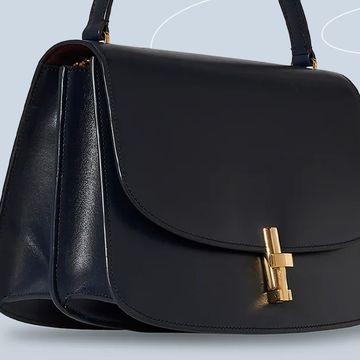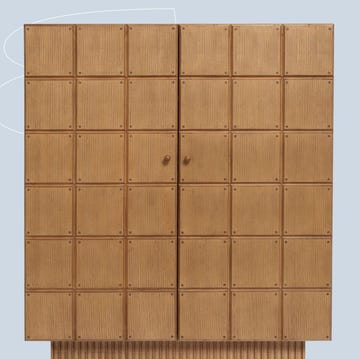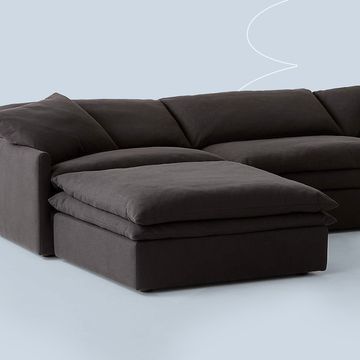For three days during a humid stretch of July in Newton, North Carolina, cars lined up along the dirt road outside the home of Deloy and Kate Oberlin.
Musicians and farmers and doctors came, and friends and family and neighbors. They showed up with their hands full. They carried homemade chicken potpie and sweet potato casserole and tamales and apple cake. They carried fiddles and banjos, a bass, a dulcimer, and a six-string guitar. They brought girls in fancy dresses and a boy holding a fidget spinner. They walked in the door and admired the family pictures along the hall, and hugged Deloy, and asked how he was doing.
“Come visit Kate,” he’d tell them.
Kate was in the living room, wearing a red sleeveless blouse, a long green skirt, sandals, and a sun hat she liked to wear when she gardened. She was lying down. She wore no makeup, save for a little tinted lip balm. Her eyes were closed, and she seemed to have the slightest smile.
The moment guests saw her, they stopped and did that thing we do in the presence of the dead: They stood at a distance, hands clasped, voices in a whisper, somewhere between reverence and fear.
But Deloy, in his love, could bridge that gap. “Say hi to Kate,” he’d say again and bring people over to her body. “She’s still kissable to me,” he’d say during quiet moments, kissing her lips and her forehead and showing there was nothing to be afraid of.
It was just Kate, his beloved wife.
Before Kate died at age 67, but when she realized it was coming, she knew she didn’t want any of the standard funeral packages most Americans buy. She did not want to be embalmed and placed in a casket underground, or to be cremated, or to have anything to do with a funeral home. She wanted to die in her house, to be laid out there, and to have everyone come and spend as much time as they wished with her body. She wanted an atmosphere of celebration, because, as she told me once, “if it’s my funeral we’re talking about, I’m dead and gone, so have a party, for goodness' sake.”
This is an unusual request in 2017. From colonial America through most of the 1800s, when the dead were cared for by their families and communities, we had no choice but to be intimate with corpses. Embalming was popularized during the Civil War, when all of those dead soldiers needed to get home, and then became a service of funeral homes, creating a class of professionals to take on tasks that Americans no longer wanted to perform themselves. Now when most modern Americans die—typically in a hospital or some other institution—a great routinized process grinds into gear. The doctor pronounces; the funeral home is called; the body is carried away by professionals.
But in recent years, Americans have become increasingly interested in alternative death practices, like home funerals, environmentally friendly burials, and liquid cremation, which dissolves human remains through a process called alkaline hydrolysis. A Seattle entity has been working on a plan to compost corpses and perhaps one day use the nutritive remains on trees and in gardens. These efforts are about a lot of things: environmental concerns, the right to keep commerce and strangers out of a sacred rite, and a long-standing Boomer interest in customizing everything, including their exits. But they're also part of a growing death positive movement that sees death as the natural order of things rather than a violation of that order.
Kate and Deloy contacted me a year ago, when Deloy, a retired doctor, thought his partner of 48 years might only have weeks left to live. She’d been diagnosed in 2012 with advanced lobular breast cancer, and had already survived longer than the statistics deemed likely. They knew I was interested in covering a home funeral; I’ve written about the American search for the so-called “good death," and the growing grassroots movement of home-funeral guides who teach people the forgotten process of caring for the dead. (Most states allow families to do this without the involvement of a funeral director.)
The first time we talked, Deloy told me he could not stomach the idea of handing his wife’s body over to strangers and to an “industrialized death process.” He wanted everything to be as natural as possible. He wanted to be by her side when she left this world, and even after, and she wanted to be with him. He thought that if others could see Kate’s home funeral up close, they might realize that it was something they could do themselves.
Kate approached her death with an openness I found bracing. During our first Skype session, she said that knowing she was going to die meant that “for the good and bad of it, there is a map.” It meant she and Deloy and their grown sons could plan for what was coming. She could choose the clothes she’d be laid out in, and the music that would play at her funeral; her family could plan for countless logistical details, including keeping her body cool for four days—three days for the home funeral, and the final day, when they needed to take her body up “the mountain,” as Deloy referred to it.
“We’re not squeamish about getting together and saying, ‘Who’s going to monitor the body temperature?’ or whatever,” Kate said, with the light laugh she sometimes employed when the topic got heavy. “It’s an opportunity to spend time together, even if the topic is a little unusual.”
Kate lived for nine more months after we first talked, through Thanksgiving, Christmas, spring, and well into summer. Over that time, I learned about her life with Deloy. They’d met on a blind date at a Janis Joplin concert in 1969, as students at Stanford. Deloy became an anesthesiologist and pain-treatment specialist, and Kate a French and Spanish teacher. They settled in North Carolina and had two sons, Cory and Brandon, who are now in their late thirties. They were active in a church and believed in a higher power, but not in a traditional god. They meditated together twice a day; Deloy calls himself a Christian Buddhist. Their house was jam-packed with art and musical instruments from their travels to places like Tanzania, Ireland, Peru, China, and Nicaragua, where they’d bought and restored an old house and spent half their time in recent years.
Other cultures offer the chance to see different ways of living, and of dying. When Kate was sixteen and visiting an uncle in Egypt, she went to St. Catherine’s Monastery, where the bones of dead monks are piled up in a charnel house like so many Legos. The disappearance of all that flesh and the permanence of all those bones taught her something: “a sense of mortality, but also longevity,” she told me the first time we spoke. That we do not last, and that we do. In the late seventies, she and Deloy spent a year in Indonesia while he was on a medical fellowship, and there they observed a memorial service unlike anything they’d seen: a weeklong celebration of the dead with feasting, dancing, and singing. “More a ceremony of life than death,” Kate said. Experiences like these made them question how we do death in America.
And they had the farm. The Oberlins lived on one hundred acres, where they baled and sold hay, planted trees for lumber, kept animals, and rented out land for growing food and flowers. If the modern world is set up to deny the obvious for as long as possible, you can’t escape death on a farm, where it is both a practical matter and an asset. Chickens are raised and slaughtered. Horses that have died are laid out in the forest and return to the earth, feeding smaller creatures. Decades ago, Brandon and Cory were entranced by a cow skull they found by a nearby creek and brought it back to their bedroom. In time, the patio of the Oberlins’ house became lined with the bones of animals—horses, a sheep, a cow, a pig, and a favorite pony named Trigger. The family composted food waste, just as Deloy had once composted dead turkeys as a child on his family’s farm in Ohio, and it became soil for the family garden, where they grew tomatoes, squash, corn, and okra for their table. Kate loved that garden. Even toward the end, weakened by cancer and chemo, she’d go out with her walker and pull weeds. Touching the soil, she told me, “makes me feel whole.”
All of which is to say that the idea of keeping Kate’s body at home for several days, the way people used to, didn’t seem strange to the Oberlins. Death wasn’t a frightful abstraction. Deloy’s medical background meant he was not intimidated by the idea of handling Kate’s body. He knew she was not a health hazard. (Handling bodies harboring transmissible infectious diseases like HIV requires some care, but people who die of conditions like cancer or heart disease generally pose no threat.) Nor was he intimidated by the logistics that funeral directors normally handle. There would be dry ice to hunt down, a death certificate to fetch from the county register of deeds, and a body to transport. But Deloy knew his sons and community would help. And perhaps he knew, on a certain level, that taking care of Kate’s death would be the thing that would save him.
Kate was 62 when she learned something was terribly wrong in her body. Her gynecologist did an exam, said her uterus didn’t feel right, and sent her for an ultrasound; he returned with his lips twisted into a funny expression Kate would never forget. After a CT scan, he told her it could be cancer. She went outside and sat on a curb because she could no longer bear to stand up. Weeks later, they would open her up and find a huge mass in her lower organs, along with what the surgeon described as countless “sesame seeds”—small tumors that had spread silently from the milk-producing glands in her breasts.
I talked to Kate about every other month, when she was feeling up to it. Afternoons were usually better, but sometimes she had to beg off our Skype calls when her energy ebbed; chemotherapy could knock her out for days, even weeks. In April, she told me a recent treatment had made her so weak that, “I almost called Deloy from several rooms away to come and put my own arm under my blankets. I couldn't muster the energy to move my arm. I thought, That's pretty pathetic, there, Kate.”
She knew time was bearing down, but she was not anxious. Instead, she said, she found it liberating to waste time playing solitaire, “even in the face of death.” She did not expect another realm to await her on the other side, though she understood the comfort it might give her to do so. We talked about Buddhism and meditation, and found we liked some of the same Buddhist teachers. She didn’t seem panicked about mortality, which surprised me because, like Kate, I’m not waiting on another realm after death, but, unlike Kate, I am terribly afraid of dying. I found myself wishing I was inside her head, seeing things the way she saw them. In April, I observed, awkwardly, that some people believe a part of us lives on after death: “Can you talk to me about how you understand that?”
“Well, I’m always happy to hear those nice stories from people, but I’ve never died before,” she said, with a bluntness that made us both laugh. But no, she added, she didn’t think some part of her would persist forever. She thought death was a “done deal.”
“I’m just afraid of leaving, of never seeing those faces again,” she told me in May, during the course of a Skype call in which she joked that whatever was causing a visual impairment in one eye—cancer there, too, it would turn out—had her looking “more and more like a pirate.” She worried about Deloy, about how he might “sink into a sadness that's almost inconsolable.” She worried about her sons. She worried about the pain that might be waiting for her. She did not want to go any sooner than she had to, yet she wrestled with just how much suffering she was willing to endure to stick around.
The grim reality of the end of her life included radiation, chemotherapy, vomiting, IVs, a drainage stent in her bile duct, and cancer in (among other places) her colon, pancreas, uterus, liver, and bones. Her six-foot frame whittled down to less than one hundred thirty pounds. “I think I’m up to number ten on my list of chemos I’ve tried,” she said one day, with her characteristic bummer-leavening laugh. While Deloy was caring for Kate, she was trying to care for her elderly mom across the country, who was moving to an assisted living facility. Meanwhile, Deloy had his own health problems. In the last year and a half of Kate’s life he had hand surgery, spinal surgery, and treatment for pre-cancer that made his face peel over like a bad sunburn.
There was a sweetness, though, during this time. They listened to recordings of Buddhist talks. Deloy volunteered at a medical clinic once a week and studied the teachings of lovingkindness, “how to take the pain and not suffer so much, and how to share kindness with everybody,” as he put it. Kate said their marriage, which over the years had had both wonderful moments and difficult ones, had deepened. She felt freer than ever to express her love for Deloy. “There’s a gentler, slower, sweeter kind of love that I feel now,” she said.
Their son Cory told me about his deep discussions with Kate on death and enlightenment. One weekend when Kate was still relatively energetic, the duo rented a cabin in the woods and ate psilocybin mushrooms in an attempt to get to what Cory called “a more spiritual space.” The drugs were mild and didn’t do much, but the experience reminded Kate of a peyote trip she’d had at age twenty, in the Sierra Nevada mountains. That time, she told me with wonder in her voice, she saw stars spiraling down in concentric circles of color. She went off on her own and danced with strange dogs who’d suddenly appeared in the dark. Before that trip, “I hadn’t put much credence in other senses of reality,” Kate told me. “That was a real eye-opener to me, this whole idea that life wasn't just what it looked like.”
It was during a conversation in May, about two months before she died, that Kate mused about the beautiful casket Deloy had had a carpenter fashion out of cherry trees blown down by a hurricane. The Oberlins called it “the box” and kept it down in the shed. Kate would not be buried in it, but would be in it while they took her up the mountain. She and Deloy engaged in a long, animated discussion about its merits and limitations. Deloy said she’d fit, but just barely. Kate wondered if she could wear boots as part of her final outfit, or if they’d add too much length. And what would it feel like to climb into the box alive? She kind of wanted to. The Oberlins coped, it seemed to me, by looking straight at what was coming and making it their own. It was the worst kind of adventure, but they were doing it together.
The last time I saw Kate was during a FaceTime session in July. Deloy knew she didn’t have long. In fact, she had three days left. She was lying in bed, her gray hair a wispy cirrus cloud around her head. Deloy updated me on her deteriorating health, and mentioned that, during the course of a recent week, the pump went out in their well, the freezer in their new fridge broke, the toilet got clogged, and he’d landed in the hospital with a kidney stone.
“When it rains, it pours,” Kate said, smiling with her eyes closed because she was so exhausted.
I had so many questions for Kate that I couldn’t ask that day. It would have felt intrusive, and she had too little energy to answer. How was she getting through this dying part? I wanted to know. How could I someday get through it, too? Instead, I asked how she was feeling. She had pain; she had nausea. She had no appetite. She could barely hold the phone.
“I have so little energy that I can’t express how happy I am, or how much I like just lying here, being around my friends, who are waiting on me hand and foot,” she said, laughing a little. “I’m in this real odd feeling of being pulled. Like something wants to pull me down, and something wants to pull me back up again.”
“I’m just tired,” Deloy said, when he’d walked away from her bedside. “I’m wondering what an old man’s gonna do.” He was already thinking about what would happen to him after Kate left. He needed to downsize and sell the beautiful house they'd renovated in Nicaragua. He suddenly felt ancient, and the future now looked like a series of losses, set into motion by the biggest loss of all. "My soul mate," he said.
When Kate died three days later, Deloy held her and cried. A hospice nurse came and pronounced her dead. Then the family positioned a bandage around Kate’s jaw and covered her eyes, so everything would stay closed when rigor mortis set in. They contacted some loved ones and a home-funeral guide named Sara Williams, all of whom had been on standby, and asked them to come over.
In the bedroom where Kate died, Sara walked everyone through the process of cleaning her from head to toe, using water scented with sweet birch, frankincense, and other oils. Sara showed them how to massage Kate's stiffening hands to soften them, so they could clasp them at her belly. She told them they might make mistakes, and that was okay, since they were not professionals. The point was, they loved Kate. She would understand.
They’d need to keep Kate’s body cool for the three days while mourners visited, so they placed frozen water bottles and packets of dry ice around her body, debating how much to use and spacing them out to protect Kate’s skin from freezer burn. Then they smoothed a quilt over her body and tried to sleep. In the night, Deloy would wake and go to his wife’s body. He found it a comfort just to touch her.
The next afternoon, Cory and Brandon and Cory’s girlfriend removed the quilt and some of the ice, smoothed Kate’s hair, and arranged her green skirt. They went out barefoot with baskets and gathered flowers and ferns, and carefully adorned Kate’s body. Sunflowers lined her hat, purple flowers sprung from her sandals, and sprigs of rosemary lay beside her legs. She looked like she was already returning to the earth.
Then friends and family arrived to pay their respects. Deloy told them how Kate had died during a great storm—how he and the boys had held her, and how afterward a rainbow appeared. Sometimes his voice would break, and sometimes he sounded like the doctor he was—explaining that Kate’s flesh was cold, but people could touch her if they wanted, and that if she seemed a little moist, it was just condensation from the humid day.
Behind Kate was a screen running a slideshow: Here was Kate on a pair of stilts; and in a hot air balloon; and standing, delighted, with a shovel, ankle deep in ivy; and riding a camel; and with a long black rat snake, which she’d helped rescue from a hay baler, draped around her neck. She had a joyous grin. Here was a picture of vibrant, young Kate sitting up in bed, holding baby Cory in her arms, and then Kate, at the end of her life, with Cory lying in bed beside her.
There were moments when I’d look over at Kate’s body and, for a brief, dreamlike moment, think I’d seen her chest rise, as if she were merely sleeping. Our brains don’t know where to put the dead. How can this be the person I was just talking to, and yet not that person? Where did she go? Kate belonged to the world, but she didn’t. Somehow that in-betweenness conveyed a mystery and a breathtaking gravity and a kind of peace, after the storm.
“She really looks better than I expected,” said Deloy’s older brother Don. “I thought maybe because there wasn’t an undertaker involved there would be coloration issues.”
I understood: We don’t know what to expect when we see a dead body. We fear smell, we fear visible signs of decay. We fear ourselves. Facing someone else’s mortality means facing your own, in all its animal functions. The affection Deloy had for Kate’s body, the way he did not shrink, was reminiscent of a mother’s love for her child.
The magic of those three days, Deloy would tell me later, was that there were moments he wanted to share with Kate, and, “I kind of could.” Death is a full stop—no bartering, no extensions—yet Kate’s presence in the house seemed to act as a pause button. Mourners could spend all the time they wanted next to her, have some casserole and come back, and she’d still be there. They could reminisce in her presence. Older mourners recalled local home funerals they’d attended as children. Remember that little girl who fell out of a car, hit her head on the pavement? She was a home funeral.
People remembered the intimacy of holding their loved ones after death. A man spoke of touching his father’s “rough worker hands.” A woman spoke of praying over her husband’s body when he died suddenly, and of defying the emergency workers, who wanted to rush him to the hospital, even though he was clearly gone. “We just took time. It meant so much to me,” she said. “We kept him for hours.”
Friends and family arranged the food on the buffet table. Someone sliced and set out the cucumbers from Kate’s garden. When musicians arrived, Deloy fetched his acoustic lap slide guitar and pennywhistle, and they set chairs by Kate and played. They played for an audience, for no audience, and, one evening, for a toddler who danced in the kitchen as the sky darkened and bedtime approached. Deloy sang “You Are My Sunshine” and a Dylan song called “You Ain’t Goin’ Nowhere,” and his voice had the cracked, unvarnished beauty of longing.
“That was her song,” he said when he finished.
There was no rush. Everything that could happen had already happened.
And then it was Wednesday morning, the day they’d decided to carry Kate out of the house. Deloy awoke a wreck, having slept poorly, and headed out at 7 A.M. with Brandon for one more task. Earlier in the week, I’d watched him talking on the phone to Enterprise Rent-A-Car about reserving a cargo van for what he elliptically described as a “delivery.”
They arrived before the office opened. After the clerk settled the paperwork, Brandon drove the van while I rode back in Deloy’s car. He talked about the things he could no longer share with Kate: a story, a memory, the sight of a flower. He spoke of how, after so many years, they’d understood each other without needing to explain. He said he and Kate had come to each other with “all the insecurities of existence, those emotions of discomfort and self-doubt—and held each other in that,” and how the generosity of her love was now gone. He needed, he said, to stop speaking of her in the present tense.
He parked outside his house. How could three days be enough? When would he be ready to say goodbye?
He went in and stood at the head of the beautiful box that contained Kate, and asked someone to take a picture. He thought of a moment years before, when Kate had begun to lose her hair and asked Cory to shave her head. She’d gone to the mirror, shrieked at her baldness, and then smiled. “If you smile, it’s like a metamorphosis,” she’d said then, and it was true. So Deloy took a cue from Kate and made himself smile for the picture.
Then Deloy and his family and some friends caravanned for two hours through the Blue Ridge Mountains to an outdoor human decomposition facility at Western Carolina University. Inside the body farm was a small area set aside for a short-term human composting study, on behalf of the Seattle-based project. Kate’s body would be composted, like the turkeys from Deloy’s childhood farm and the orange peels from their kitchen. "The irony is, all you need to do is let nature take its course," Deloy had said earlier in the week.
They carried the box to a site in a sunny field and removed Kate from it, placing her directly on a bed of wood chips. She was dressed in cotton and silk—nothing man-made that would resist decomposition—and all of it, the red blouse and the green skirt and the skin and the muscle and the organs of Kate, would go back to the earth.
Someone made a pillow for her head out of wood chips. Someone propped a few umbrellas that shielded her face from the sun. They decorated her again with flowers they’d brought, with great methodical care. Deloy sat in a folding chair and played Dylan again on his guitar: You ain’t goin’ nowhere.
In time, they would make speeches, Cory’s voice high with grief, Deloy calling Kate his compass: “I don’t know how I’ll spin without her.” Brandon remembered how his mother taught him not to be afraid of the dark. “She gave me a button that belonged to my great-grandmother. She said, ‘It's a magic button—you hold it in your hand when you sleep and it will protect you at night.’ And it did.” His mother, Brandon said, taught him that mystery could be beautiful, and that darkness was not something to be feared. “She taught me comfort from the unknown,” he said, his voice thick and angry with the ferocity of love.
Later, friends and family would cover Kate, first with more flowers, then with grass cuttings, and then with mulch—going back and forth with buckets, a caravan of solemn gardeners, till all anyone could see was a tall mound of mulch. They would drive home with her box. Deloy would put it near the exercise pool, place a cushion on it, and use it to do rehab exercises for his spine. He’d let the box bide its time until the day it needed to be used again, with his own body inside.
But before all that, before she disappears under mulch, and before Deloy drives home to an empty house—before all of that, he goes to Kate one more time. She still looks like she’s sleeping, except her eyelids have just a touch of pale purple, like the tail end of a sunset. He kneels and kisses her lips one more time. She is still here, still with him. Then he bends his head and sobs into the earth.
Story editor: Whitney Joiner
Photographer: Mike Belleme
Photo producer: Sameet Sharma
Video producer/director and co-editor: Maria Chiu
Video editor: Robert Mroczko
Director of graphics: Danny Ratcliff
Colorist: Nick deGrazia
